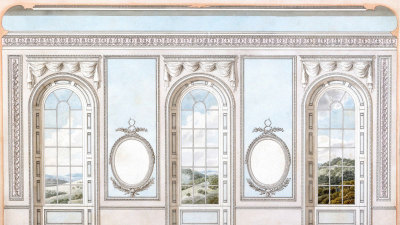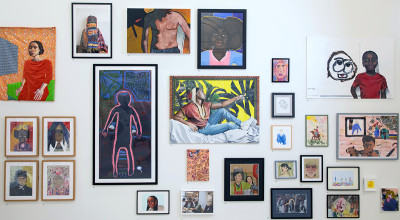Naked truth: the story of female life models at the RA
Naked truth: the story of female life models at the RA
By Amy Bluett
Published 3 March 2021
What does a 230-year-old household bill tell us about life modelling in the 18th-century? Here, we explore the historical role of the female nude life model at the RA.
-
An earlier version of this article was published in 2015.
With women now represented in the Membership and awarded the right to study from a life model during their education, the third arena where we discover an intriguing facet to the history of women at the RA is back in the Life Room.
The Academy championed the importance of teaching its students life drawing by integrating the facilities for drawing from life within its first headquarters in Pall Mall, and later in Old Somerset House. In general, female nude models were not introduced into academies in Europe until the 19th century, but England was the exception, with the Royal Academy itself recording the use of female models as early as 1769. Here it was agreed that in addition to four male models, one female model should be employed three times a week for each of the summer and winter terms. In the same year, rules were established to ensure that men under the age of 20 who were unmarried were prohibited from drawing from the female nude.
I was interested to find out what type of woman would have been willing to become a nude life model, in the context of the mid-18th century, when women were generally regarded as the passive property of their husband or their fathers. Interestingly, in 1769 the person responsible for acquiring such women was none other than George Michael Moser, then Keeper at the Academy and founding member Mary Moser’s father. Male models at the time were chosen for their physique, and were often the porters of the Academy, soldiers or boxers. Women on the other hand often presented more of a challenge. They were often sex workers or working class women whose bodies would not necessarily have been in their prime, and in many cases it would have been the brothel owner who sent them, regardless of their own wishes.
When I was looking through the RA Archive, I unexpectedly discovered documents that not only show women regularly joining men in this profession, but also that they were being paid double compared to their male counterparts.This housekeeper’s bill (shown below) from January 26, 1788, gives us a snapshot of daily life at the Academy. But beneath the listings of bread, beer and wood are two male names and an anonymous “woman”. This bill shows that the largest expense was the payment of the female model, not the men. It is not clear why, but perhaps their anonymity on this bill highlights the higher stakes involved for women and that their reputations, even as prostitutes, could have been compromised by performing the role of life model.
-

A Royal Academy housekeeper's bill from 1788
© Royal Academy of Arts, London
-
Social attitudes towards the use of nude models were complicated by the issue of morality during the latter part of the 19th century. The artist James Barry complained of prejudice towards the representation of the naked figure by those who regarded it as “indecent and tending to lewdness”. The Academy became a regulator of practice, but continued to use female nude models in their life drawing lessons, and the success of artists such as Joshua Reynolds, David Wilkie, John Constable and William Etty has been attributed to this.
Women in the Academy in 2015
Women have always been a minority at the Academy, and even in 2015 represent just 25% of our Membership, with a total of 32 female Academicians out of a possible 126. Despite the fact that women have been nominated for Membership at a similar rate to men, their journey to full Academician status remains a sticking point.
However, the last two years have seen a dramatic change. In 2013, of the 10 new Academicians elected only 20% were women. In 2014, that percentage rose to 100% as every one of the six new Academicians elected was a woman. In the RA Schools, the ratio of male to female students is roughly 50-50, and we have the first ever female Keeper (Eileen Cooper RA).
Although women today make up over 60% of art and design students in the UK, just 31% of London galleries are exhibiting work made by women. Questions around positive discrimination and quotas continue across the Academy, with strong opinions from many generations of women. So how far have we really come since 1768?
-
Amy Bluett is the RA’s Events and Lectures Co-ordinator. With special thanks to the RA’s Archivist, Mark Pomeroy.




